Galaga 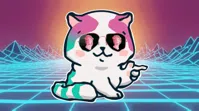
—
@RWBY
Just in case it needs explaining 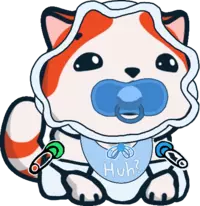 Galaga is a space themed shoot ‘em up (also known as shmups) and is among the best known of Namco's arcade games. The game is a fixed shooter with a controllable ship that can be moved horizontally. Stages are completed by defeating all enemy ships, but the game continues until the player is out of lives so the idea is to reach the highest stage possible and of course to have the highest score possible.
Galaga is a space themed shoot ‘em up (also known as shmups) and is among the best known of Namco's arcade games. The game is a fixed shooter with a controllable ship that can be moved horizontally. Stages are completed by defeating all enemy ships, but the game continues until the player is out of lives so the idea is to reach the highest stage possible and of course to have the highest score possible.
The game was quite innovative for the time. The enemy ships would actually track and follow the player and you could autofire by holding down the button, previously impossible in earlier games like Space Invaders. The game's hardware allowed two player projectiles on screen at any time 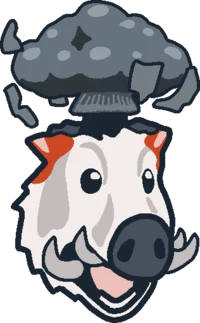 and enemies could attack in more than just one pattern. The game also has a memorable spin on an extra life mechanic — if a boss Galaga abducts a player ship it becomes another enemy, but so long as you have one life remaining (don't try it otherwise lol
and enemies could attack in more than just one pattern. The game also has a memorable spin on an extra life mechanic — if a boss Galaga abducts a player ship it becomes another enemy, but so long as you have one life remaining (don't try it otherwise lol  ) you can shoot down its captor to liberate your past life and have it form a larger double fighter with the current ship.
) you can shoot down its captor to liberate your past life and have it form a larger double fighter with the current ship.
Galaga went down as one of the all time greatest hits of its generation, but how did it come to be? And why was Japan such a leader in the gaming industry? What did g*mers even have to play before dating sims and rougelikes? 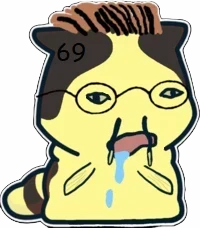
Weebery: Fillmore's Original Sin 
The story of Galaga and Otaku shit in general can be indirectly traced back to 1852, the year in which Commodore Matthew Perry led a US Navy expedition to Japan under orders from 13th President of the United States Millard Fillmore. From the 17th century onward, the Japanese Tokugawa Shogunate of the Edo Period had pursued a strict policy of xenophobia and isolationism. Common Japanese were not permitted to leave the country. Western traders were permitted to operate only out of an isolated island in the newly constructed port of Nagasaki, and even then the Japanese were weary of foreign political interference and the conversion practices of Jesuit missionaries. In response to the 1637 Shimabara Rebellion, the Tokugawa decided they'd had enough of Catholic nonsense and expelled all Iberians 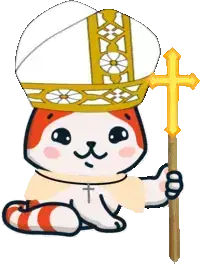 For over a century after only the Protestant Dutch were permitted regular direct access to the port.
For over a century after only the Protestant Dutch were permitted regular direct access to the port.
As the modern world developed and the great empires of Europe expanded, Japan's isolation became increasingly frustrating to European entrepreneurs hungry for East Asian trade goods. If anything these early industrial westerners had already become weebs of product if not media.
Remembered as "The Arrival of the Black Ships" — a Japanese term for western vessels — Perry's open-tf-up voyage so many centuries later was an unwelcome surprise to the incumbent aristocracy. Having believed they were still keeping pace with western advancements, the hapless Japanese officials of Edo immediately realized that these modern, ironclad vessels of steam power and explosive shelled guns — guns that Perry readily demonstrated to the Japanese "in celebration of American independence" 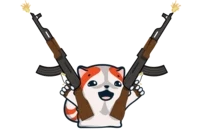 — could easily devastate the capital. Initial reports to the shogun made it clear that it would be completely impossible to defend Edo from the fleet if things turned hostile.
— could easily devastate the capital. Initial reports to the shogun made it clear that it would be completely impossible to defend Edo from the fleet if things turned hostile.
Perry's actions were a textbook example of gunboat diplomacy, as though there weren't any recorded incidents of violence in his expeditions, it didn't take long for the Japanese to agree to virtually all of Fillmore's demands. The United States soon established favorable trade relations, and similar deals with Britain, France, Russia, and so on so forth soon followed. By culture shock and existential threat did Japan's closed-world history come to an end. Indeed they immediately began developing in the exact opposite direction.
And in retrospect Fillmore's actions would begin a relationship between America and Nippon that, while a bit chaotic in nature, would ultimately prove quite permanent.
Following their victory in the Russo-Japanese War 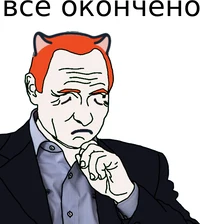 Japan went into the 20th century as the world's only non-western nation to be recognized as a great power. Its reputation further solidified following the Allied victory in the First World War, a war in which America and Japan fought side by side against the Kraut menace. This relationship of peace and co-prosperity would continue going forward into the Cold War
Japan went into the 20th century as the world's only non-western nation to be recognized as a great power. Its reputation further solidified following the Allied victory in the First World War, a war in which America and Japan fought side by side against the Kraut menace. This relationship of peace and co-prosperity would continue going forward into the Cold War 
Okay so maybe there was that 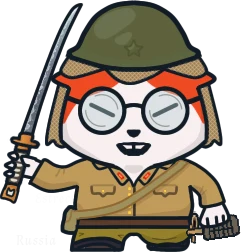 thing in the 40's, but the United States government soon saw reason and realized that a powerful trade partner and bulwark against East Asian communism
thing in the 40's, but the United States government soon saw reason and realized that a powerful trade partner and bulwark against East Asian communism 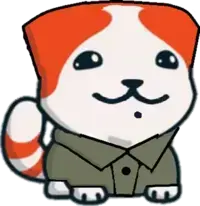 was much more important than a few million
was much more important than a few million 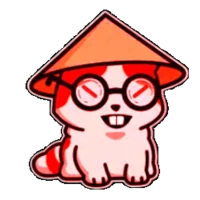 and a battleship or two. I mean, how could we dislike a country that hated Russians as much as we did?
and a battleship or two. I mean, how could we dislike a country that hated Russians as much as we did? 

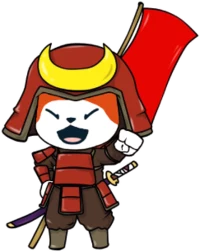
During and even after the American post-war occupation Japan received significant gibs  not unlike Europe with the Marshall Plan. This facilitated a second period of rapid industrialization in less than a century, as well as a special economic relationship with the US that continued even after the Nips regained their practical independence.
not unlike Europe with the Marshall Plan. This facilitated a second period of rapid industrialization in less than a century, as well as a special economic relationship with the US that continued even after the Nips regained their practical independence.
From ‘45 going through the ‘80s, the "Japanese Economic Miracle" saw the country grow into the world's second largest economy, surpassing every other western country as well as those dirty commies just slightly up and to the left 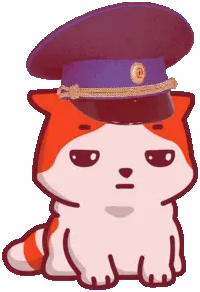
Contributing factors to the boom include the cooperation of manufacturers, suppliers, distributors, and banks in close-knit groups; the powerful enterprise unions and good relations with government bureaucrats, and the guarantee of lifetime employment in big corporations and highly unionized blue-collar factories. 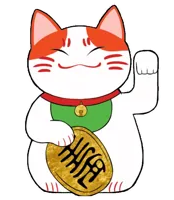
Japanese companies also benefited from this close international partnership. The US absorbed Japanese exports, subsidized the Japanese economy, transferred technology to Japanese firms, and tolerated controversial Japanese trade practices — a few major lawsuits and Reagan era Japan-Bashing notwithstanding 
Partner ventures between Japanese and American companies for the joint distribution of goods and media was also common going as far back as the 60's, with the partnership between Namco and Atari/Midway being just one such example  This coupled with the exchange of ideas and breakthroughs in the tech sector allowed the Golden Age of Arcade Games to kick off in both countries at around the same time
This coupled with the exchange of ideas and breakthroughs in the tech sector allowed the Golden Age of Arcade Games to kick off in both countries at around the same time 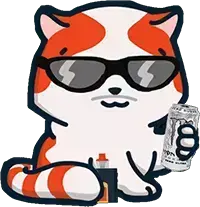
And Namco, of course, was the company that developed Galaga 
Post-War Companies: Now Family Friendly 
Nakamura Seisakusho Co., Ltd was founded in 1955 by Masaya Nakamura. The son of a shotgun repair store owner, Nakamura originally tried and struggled to find work with shipbuilding in post Second World War Japan. Presumably firearm ownership also started to wane in Japanese society, but Nakamura noticed the old man was still making money producing pop guns for children. This inspired him to start a company, his first profits coming from coin operated rocking horses installed on the roof of a department store. 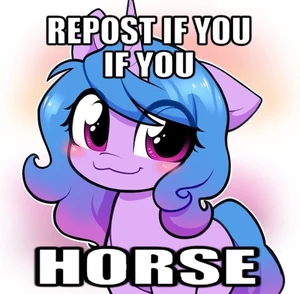 The business slowly grew and along with Taito, Rosen Enterprises, and Nihon Goraku Bussan, Nakamura Seisakusho became one of Japan's leading amusement companies. However, Nakamura could not have his rides inside of department stores because other companies already had exclusive privileges. The company began to branch out into any form of entertainment it could.
The business slowly grew and along with Taito, Rosen Enterprises, and Nihon Goraku Bussan, Nakamura Seisakusho became one of Japan's leading amusement companies. However, Nakamura could not have his rides inside of department stores because other companies already had exclusive privileges. The company began to branch out into any form of entertainment it could.
In the 60's the company secured a partnership with Disney that allowed the use of 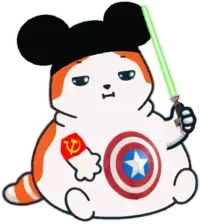 characters for the rides. This coupled with anime sponsorships — anime itself first getting a real start in the ‘60s
characters for the rides. This coupled with anime sponsorships — anime itself first getting a real start in the ‘60s  — made it a driving force in the 100 yen coin market. Also acquiring its own manufacturing facilities, the company started making more complex proto-game contraptions like Periscope. At this point Nakamura Seisakusho had grown to a whopping ten employees
— made it a driving force in the 100 yen coin market. Also acquiring its own manufacturing facilities, the company started making more complex proto-game contraptions like Periscope. At this point Nakamura Seisakusho had grown to a whopping ten employees 
And in either 1971, ‘72, or ‘77 — different sources keep giving me different dates — the company also shortened its name to the more marketable Namco 
(Both Namco and Sega — which formed from Rosen and Nihon Goraku Bussan — claim to have made Periscope. There's no official explanation for this discrepancy)
My first system was an atari 2600 with space invaders. Pixels were the size of your face, man.
Across the pond another company was enjoying great success 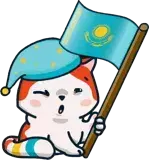 with emerging entertainment media. Created in 1972 in Sunnyvale, California (I didn't know it was an American company before researching this post
with emerging entertainment media. Created in 1972 in Sunnyvale, California (I didn't know it was an American company before researching this post 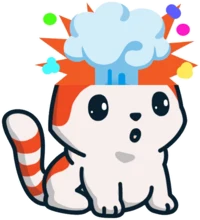 ) Atari would go on to become another giant of the arcade industry. It also turns out their financial troubles began years before the infamous ET game
) Atari would go on to become another giant of the arcade industry. It also turns out their financial troubles began years before the infamous ET game 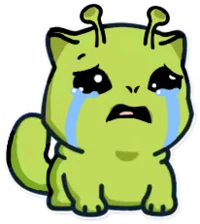
If there's some turbo-Luddite out there who needs this explained, Atari is famous for creating Pong  and one of the first home consoles. A Japanese division of Atari was established in 1973 but soon ran into problems with mismanagement and embezzlement. Eventually President Kenichi Takumi simply stopped coming into work
and one of the first home consoles. A Japanese division of Atari was established in 1973 but soon ran into problems with mismanagement and embezzlement. Eventually President Kenichi Takumi simply stopped coming into work 
Atari co-founder Nolan Bushnell received offers from companies like Sega and Nintendo to purchase the division but they tended to be insultingly low  Nakamura outbid everyone with an offer of $500,000, but once the deal was agreed upon, he revealed he didn't actually have that much money and would pay in installments. Bushnell still agreed because there weren't any other buyers lined up
Nakamura outbid everyone with an offer of $500,000, but once the deal was agreed upon, he revealed he didn't actually have that much money and would pay in installments. Bushnell still agreed because there weren't any other buyers lined up 
The acquisition allowed Namco to distribute Atari games in Japan and it wasn't long before the company started to create arcade games of its own.
Namco's first video game was Gee Bee in 1978, designed by Toru Iwatani. 1979's Galaxian soon followed, but first we need to explain its inspiration.
Space Invaders 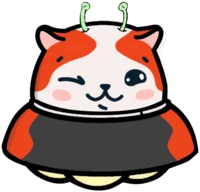
Released in 1978 by Taito (and licensed to Midway for American distribution) Space Invaders is considered to have marked the dawn of the Golden Age of Arcade Games as well as the shoot ‘em up/space game genres. This archetypical arcade game was the first fixed shooter and established the "multiple life, progressively difficult level paradigm". That it featured combat at all in the form of enemies that shot back was revolutionary. It also introduced being defeated by enemies as a failure state instead of simply having a scripted time limit. Because realistic movements for aircraft couldn't really be done and shooting at people was considered immoral, a space theme in reference to The War of the Worlds was chosen to take advantage of sci-fi hype generated by Space Battleship Yamato and Star Wars 
Space Invaders was huge, perhaps the first "blockbuster" game, and adjusted for inflation went on to gross more than fourteen billion by 1982. Its success brought unprecedented mainstream attention to video games in both hemispheres, North American fame coming alongside its release in the states. The Space Invaders Tournament held by Atari in 1980 was the first video game competition and attracted more than 10,000 participants. By 1980, 86% of the 13–20 year old population in the United States had played arcade video games 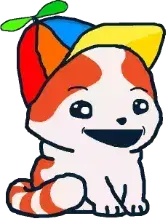 and by 1981 there were more than 35 million g*mers visiting video game arcades in the United States.
and by 1981 there were more than 35 million g*mers visiting video game arcades in the United States.
As for the  Namco was just one of the companies that saw the success of Space Invaders and immediately tried to recreate it. As Galaxian began its earliest development, Nakamura urged the devs to make the best "Post Invaders" game they could
Namco was just one of the companies that saw the success of Space Invaders and immediately tried to recreate it. As Galaxian began its earliest development, Nakamura urged the devs to make the best "Post Invaders" game they could 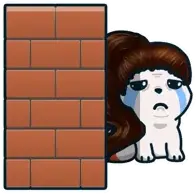
Though not everyone remembers it these days, 1979's Galaxian was Namco's first major hit and a major step up from Space Invaders. It was one of the first video games to feature RGB color graphics and the first ever to use a tile-based hardware system capable of animated multi-color sprites as well as scrolling for the background. It was considered a big deal that the enemies also possessed proper AI that allowed them to home in on the player's ship in response to its movement, as opposed to waiting for the player to be nearby or firing randomly.
“The post-Invaders arcade scene belongs to Namco!” —that was the goal we set, and the pressure riding on us with the development of Galaxian. You could call it the first video game space war visual simulator, with its pioneering use of multi-colored sprites.
Galaxian – 1985 Developer Interview with designer Kazunori Sawano
The success of Galaxian put Namco on the radar. It was the second highest earning game of ‘79 and would again be the second highest for the next year.
Funnily enough, the top earning game of ‘80 was another, more famous Namco title.
I should scarcely have to explain Pac-Man or its incredible popularity. Developed by the aforementioned Iwatani and released in 1980, Namco's next major hit would go down among the most legendary of all time. Pac-Man dethroned Space Invaders and would mark a shift towards mascot driven games, to the point of becoming the mascot of Namco itself. Having noticed that shmups games like Space Invaders and Galaxian were mostly popular with men, Namco designed the game to appeal to women through cutesy graphics and named characters. These changes also made it gaming's first licensing success for Pac-Man's popularity as an individual character led to the creation of a franchise, and arguably, all further gaming multimedia ventures.
In other words gaming has been dead since 1980 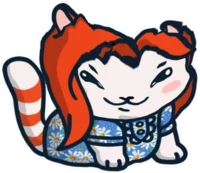

The success of such a game inspired Namco to pursue more genres and yet more marketable mascots, but they were still willing to return to moid genres of yore one final time for 1981. So came the actual subject matter of this effortpost.
"Space Invaders" 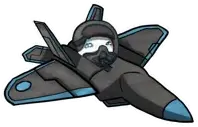
Namco had produced a large number of Galaxian cabinets and by 1981 the game had become harder to sell. The game that would become its sequel began development as a quick and easy additional game to run on the cabinet's existing hardware and help clear out inventory. Namco dev Shigeru Yokoyama would first create King & Balloon for this purpose, but work on what was to be the second game grew into an entirely new project that required more advanced hardware. The Namco Research and Development Division recommended it become a new game entirely, to be developed on the new Galaga arcade board.
The name was decided on before the genre. At the time Namco had a laid back culture and gave the devs leeway in decision making. It wasn't specifically demanded that the new project be another Space Invaders inspired game, but Yokoyama decided a sequel to Galaxian was appropriate in response to management's original idea. This was to be another great step forward for the formula Space Invaders established, such that even to this day many people erroneously refer to Galaga as "Space Invaders" (Including me as a lad 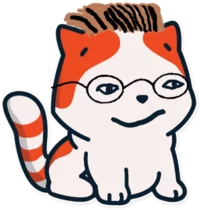 )
)
An interview I found with Yokoyama details many of Galaga's design decisions,
On the game's earliest conceptualization,
—Did you study Galaxian much in preparation for making Galaga?
Yokoyama: At the time, I was the best video game player at Namco. When I was a student I played a ton of Space Invaders, and I was legitimately good. At the office it was always me sitting in front of the Galaxian cab. (laughs)
—I feel like your experience there is clearly reflected in Galaga. There's a number of things that Galaga seems to have inherited from Galaxian, like how when you kill a boss galaga, the other enemies will stop firing for several seconds.
Yokoyama: Yeah, that is true. Another thing from Galaxian is the way the boss galagas will appear with two red guards, and if you destroy the guards before killing the boss, you get a higher score. That was something we added later in the development process of Galaxian. When a great player puts on a performance, you see, everyone watching goes “ooo!!” And the heart of that performance is scoring. Galaga didn't have those elements at the start either, but we added a lot of stuff like that as we went along.
On the ambition behind Galaga being too much for Galaxian's hardware
—I see, and Galaga is the game where you did everything yourself, including the initial conception.
Yokoyama: That's right. Unfortunately, King & Balloon used the same hardware as Galaxian, so it couldn't do autofire.
In King & Balloon, the enemies steal the King, and that puts you in a state of panic, right? I wanted to reflect that mindset in a game with tons of bullets, but sadly the Galaxian hardware couldn't do that, so we settled on making the bullets faster than they had been in Galaxian. I was also told to make it autofire, but since we weren't using sprites, we couldn't do autofire either.
—I see, interesting. So even at this very early stage of STG, developers were thinking about autofire. And then new hardware came along and you could add it.
Yokoyama: That's right. With new hardware the impossible became possible.
Arcade era companies were more lax than modern ones,
—For Galaga, I understand you worked together with the programmers in coming up with the planning and design documents?
Yokoyama: Yes. First I'd write the spec sheet, making sure that what I wanted to create was technically possible for the programmers. Then the planning and game design docs would get stuffed full of all kinds of ideas… we didn't really have planning meetings back then at Namco. If your boss, or your boss' boss, gave you the OK, you'd just start working on it.
Yokoyama: I've often been asked what the “Namco essence” was, but all of the developers then had very distinct individual personalities—there was no central philosophy of game design. However, the one thing we did all share was a commitment to do things right, down to the last bit. That's why we playtested our games so thoroughly, both with others and by running simulations ourselves. Not wanting to do things half-assed wasn't some principle we had as craftsmen or anything; it was part of putting ourselves in players' shoes and imagining what would be fun for them. I think that helped us stay balanced as developers.
On developing the game's famous double fighter feature,
—In Galaga, your ship can be captured, and then rescued to be combined with your ship for double the firepower. Was that an idea you had from the beginning?
Yokoyama: No, it wasn't. Back then we always went through the process of creating one or two prototypes. With the first Galaga prototype, enemy formations would appear at the top of the screen, and fly down at you in patterns that were different from Galaxian. It was playable, but to be honest, it was kind of uninspired. Galaxian is all about weaving your way through the gaps of the missiles that are fired at you, but it would be boring if we just rehashed that. The first thing we tried, then, was creating enemies with a different attack style. I can't remember the movie now, but there was one out that had these beam weapons…
—Like a tractor beam, or?
Yokoyama: Yeah, a tractor beam. Not the kind of laser that destroys things in one blast, but rather the kind you would use to capture something. I wanted something like that to capture your ship, and then you'd be able to rescue that captive some how.
Yokoyama: At first, when you rescued your ship, it gave you an extra life, but that was just a different spin on extends, so I thought it was boring. That was when I thought of the “dual fighter” idea. Then came the question of whether to make them line up horizontally, or vertically.
Interestingly, Galaga's most famous feature was almost too much for even the newer hardware. The board couldn't handle having two ships on the screen and initially wouldn't let the double ship fire. Yokoyama solved this by making the double ship a single sprite instead of two joined together. The double missile is also actually a single sprite. This allowed the game to squeak past the hardware limitations.
—Oh, so even though it looks like you're firing two missiles in dual fighter mode, it's actually just one sprite? Clever!
It took a while for players to really understand the concept.
Yokoyama: I also remember that at our first location test, at a game center by Nishiogikubo Station, none of the people I saw playing were using the dual fighter ability! Everyone was just dodging. And we had gone to all the trouble of putting that instruction card up! I thought that would have explained it, you know. (laughs)
Inspired by the "cutscenes" from Pac-Man, Galaga was one of the first games to have bonus levels. Not unlike how the enemies speeding up in Space Invaders was actually unintended, Galaga's challenge stages were inspired by a glitch.
Yokoyama: Well, Pac-Man had the “Pac-Man Show” intermission cutscenes, and Rally X had the Challenging Stage, so I knew Galaga was going to need some special showy feature like that. But for awhile I just couldn't come up with anything. I was wracking my brain when our programmer Tetsu Ogawa came to me with a bug he had found, where the enemy formations would appear and then just fly off, without breaking formation. He called me over and said “I wonder if we can find a use for this?” (laughs)
—Hah, so Ogawa thought it was interesting too. (laughs)
Yokoyama: The bug also prevented the enemies from firing. I thought it would be fun to sit there and just blast away at them, so this became the Challenging Stage in Galaga. It was a product of chance.
—But it must have taken a lot of effort to work the the Challenging Stage up into something so elaborate and spectacular.
Yokoyama: At first there was only one pattern they'd fly in, which was the pattern that the bug had originally created. During the course of the development we realized we wanted this to be a game with a lot of replay value, so we decided to add more patterns. I owe a lot of that to Ogawa, who told me he could create more patterns by using some code from another program he had made. Ogawa was a talented programmer, but he also had “game sense”, and many ideas in Galaga were added by him. If I had not linked up with Ogawa, I don't think Galaga would be half the game it was!
In Japan arcade "boards" that resembled tabletops were more common than tall arcade cabinets like what you're probably picturing. Galaga was one of the first to have the controls laid out more horizontally instead of vertically. This would be more common going forward.
Yokoyama: Until Galaga, our cocktail table-style cabinets for Galaxian, Pac-Man, and others had the stick and buttons laid out vertically, flush with the cabinet siding. Galaga was a game where you would need to be firing repeatedly, and I knew the vertical layout would be awkward. The buttons themselves were really stiff and wide on the Galaxian cabinet too, and hard to use. I consulted with cabinet makers and engineers and told them to lay out the buttons horizontally, using a panel that protruded from the table.
—Wow, you had a lot of authority!
Yokoyama: They made a prototype, and when people tried it out, it readily apparent how much easier it was this way. I said we needed to change the buttons too, and we tried out a variety of different ones. There was a lot to choose from there: heavy buttons, light buttons, the amount of spring, and durability too… we ordered a bunch and picked out the one we thought was best.
—Galaga was the first game to use a control panel with everything laid out horizontally. Did you have to change the shape of the tables too?
Yokoyama: The tables we were going to use were already on location, so there was some objection from management about how they were going to retrofit this control panel. They were complaining it would take too much time. Opinions were divided, with some people at Namco agreeing, and others refusing. I then went around to each department at Namco and let the managers try out the new control panel and see for themselves how much easier it was to play.
They agreed it was better and that this panel should be adopted as the new standard. However, sometime after that decision was made I got really chewed out by a furious executive: “there's no way *$#%$ way we can sell these!!!!” He told me to change it back right away, but since I now had a lot of people on my side who thought this new panel was better, we ended up using it after all. Thank goodness I won that battle!
—And ever since then, we've been using this layouts for arcade cabinets.
Yokoyama: Well, that executive was so angry, at the time even I was wondering, “is this a good idea?” (laughs)
Lastly Yokoyama talks about how different the gaming industry was back then.
—Do you have any message for young aspiring game designers today?
Yokoyama: Hmm… that's difficult. (laughs) I'll share something similar to what I said in the self-introduction I gave at a recent management training event. The games I made were done almost entirely by two people: myself and Ogawa. So we knew every last inch of how they worked. We were able to develop those games with total knowledge and control, but the scale of game development has changed today and that kind of thing is no longer possible. But if you have the chance as a young developer to experience that, I recommend it.
Nowadays you can specialize as a programmer, planner, designer, or musician, but originally a “game creator” was simply someone who wanted to make a cetain game, and he knew and did everything involved: design, music, programming, documentation. I think you grow a lot more as a developer that way.
Graphic designer Hiroshi Ono designed many of the sprites, including the player's ship and the Boss Galaga alien. Many of Namco's arcade games during the golden age of arcade video games through the early 1980s featured his pixel art, including Galaga, Dig Dug, and Mappy.
Galaga was released in Japan in September 1981. It was released in North America through Namco's partnership with Midway Games in October of that year. The game was an immediate hit and became one of Namco's most well known. It also had great staying power remaining in the top ten lists of most played arcade games well into the late 80's and past the video game crash of 1983. Galaga remains one of the few arcade games of the era to still be traditionally profitable and to this day it can often be found at a wide variety of arcades alongside much newer machines. (As opposed to niche places that are specifically 80's themed.) Like Pac-Man and its inspiration Space Invaders, Galaga is one of the games people think of when they remember the golden age of arcade games and arcade cabinets in general 
Galaga also spawned two lesser known sequels, Galplus and Galaga ‘88. Updated and flashier versions of the game along with the original have also been made available for newer platforms such as PC and Xbox Live Arcade 
And if not as well known as Pac-Man, Galaga has also become something of a mascot for Namco and has been referenced frequently by other media.
There have also been fairly random attempts at expanding it into a franchise like Pac-Man, for example the 2019 gacha game (yes really) Galaga Revenge
Closing Thoughts 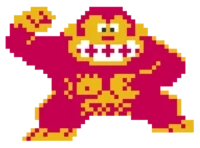
At the risk of giving away the femme mystérieuse regarding my age  I will admit that the true Golden Age of Arcade Games was before my time. I only played arcade games at malls or birthday parties or wherever and I imagine that's how it still is with little Gen Alpha
I will admit that the true Golden Age of Arcade Games was before my time. I only played arcade games at malls or birthday parties or wherever and I imagine that's how it still is with little Gen Alpha 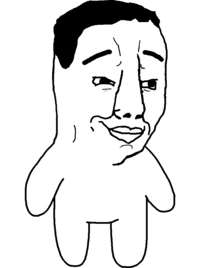 Galaga was the only 80's game I played a lot of, as all the other arcade games I can remember were much newer
Galaga was the only 80's game I played a lot of, as all the other arcade games I can remember were much newer
Since then I've tried plenty of classic games in one way or another, but without 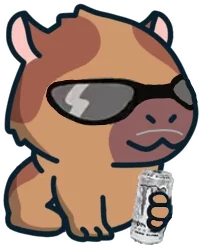 glasses they aren't always fun in year of our lord 2024. Galaga is the only one I really like. The one I still come back to. It has a charm to it that has stood the test of time and in my opinion it truly is the best game of that era
glasses they aren't always fun in year of our lord 2024. Galaga is the only one I really like. The one I still come back to. It has a charm to it that has stood the test of time and in my opinion it truly is the best game of that era 
If you like Pac-Man better you can write your own effortpost on it 
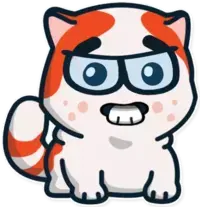





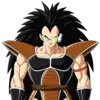

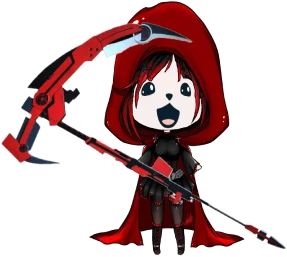 🤝
🤝  Palworld
Palworld 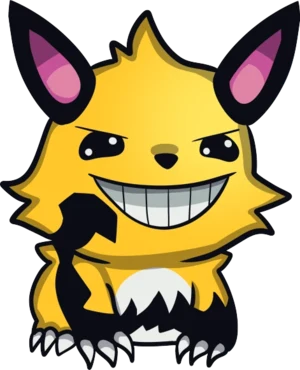 or even Skibidi
or even Skibidi 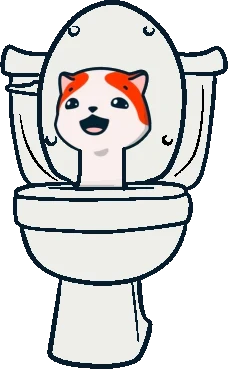 there was… GALAGA
there was… GALAGA

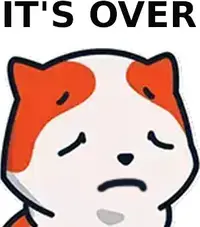


























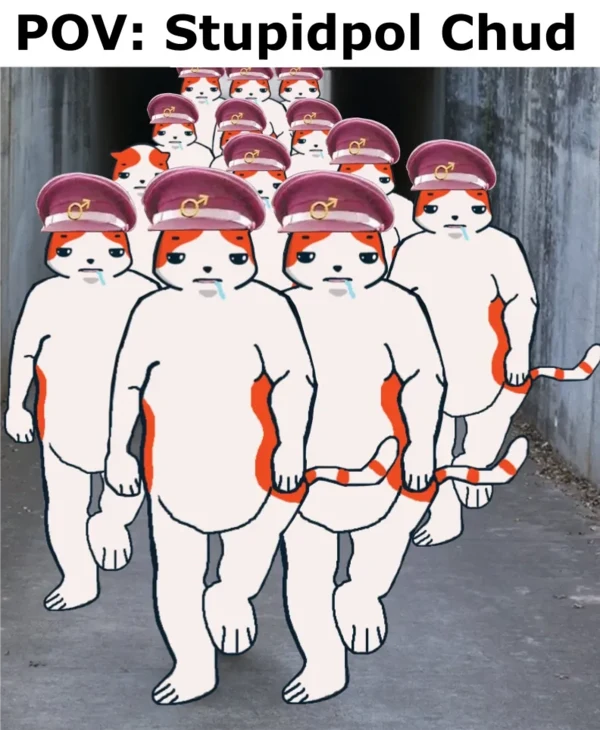
Jump in the discussion.
No email address required.
!g*mers Arcade kino
!historychads Learn about the golden age of arcade games
!oldstrags Is 1981 old enough for you?
!effortposters !pinggrouplovers !pings
Pinging @HailVictory1776 because he LOOOVES Japanese games
@HailVictory1776 because he LOOOVES Japanese games 
Jump in the discussion.
No email address required.
1981 - 43 years ago.
Jump in the discussion.
No email address required.
More options
Context
!g*mers !historychads !oldstrags !effortposters !pinggrouplovers !pings
Edit: Given the poor reception of this outdated chart, I am willing to work on an updated chart made by YOU, Dramatards!, if you were pinged here, you are welcome to make your own suggestions and critiques for a new chart!
Jump in the discussion.
No email address required.
Jump in the discussion.
No email address required.
Come on neighbor this is an outdated meme straight from 2018, let us make an updated version of it!
Jump in the discussion.
No email address required.
Jump in the discussion.
No email address required.
More options
Context
Galaga
RWBY Grimm Eclipse
The rDrama Casino
All the games we really need
Jump in the discussion.
No email address required.
More options
Context
More options
Context
Nobody cares about your cute twink games for unemployed fats.
Jump in the discussion.
No email address required.
Someones mad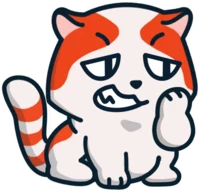
Jump in the discussion.
No email address required.
Jump in the discussion.
No email address required.
More options
Context
More options
Context
More options
Context
likes hero shooters award
Jump in the discussion.
No email address required.
literally, I was informed that averi is actually an isekaied man, is this true???
Jump in the discussion.
No email address required.
she is actually me after i died to coof in 2020
Jump in the discussion.
No email address required.
o7 I cant imagine literally anything worse than becoming a woman but go off i guess
Jump in the discussion.
No email address required.
its offset by the fact that you become a fox
Jump in the discussion.
No email address required.
Really??? I guess death ain't so bad after all.
Jump in the discussion.
No email address required.
More options
Context
More options
Context
More options
Context
More options
Context
More options
Context
More options
Context
More options
Context
wht kind of shit chrt is this?? where my q3A nd Age2x cels At?? !oldstrags !g*mers
Jump in the discussion.
No email address required.
Made by subh/v/mans
Jump in the discussion.
No email address required.
More options
Context
Rtscels and cscels brfo
Jump in the discussion.
No email address required.
More options
Context
More options
Context
I see you're not a PC g*mer, no rts or RPGs
Jump in the discussion.
No email address required.
More options
Context
Hecko I'm Hipster Indie Trash
Jump in the discussion.
No email address required.
More options
Context
This pic is only made worse by the additional rows after the first. It totally ruins the joke.
Jump in the discussion.
No email address required.
The joke only works as the last 3 columns of the first row
Jump in the discussion.
No email address required.
More options
Context
More options
Context
Griller G*mers are a thing
Jump in the discussion.
No email address required.
More options
Context
I love the original on the DS!
Jump in the discussion.
No email address required.
Is it better than the one on the Switch?
Jump in the discussion.
No email address required.
100%
The game has way more rule options, unique games, and unlocks. The Switch one is such a disappointment by comparison. The only downside is the dated graphics, but it has enough style where it aged well.
Jump in the discussion.
No email address required.
More options
Context
More options
Context
More options
Context
they should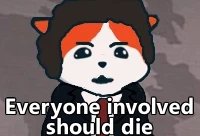 all be ‘jaks
all be ‘jaks
Jump in the discussion.
No email address required.
More options
Context
I would like to say meat beating trash but I haven't actually played Monster Girl Quest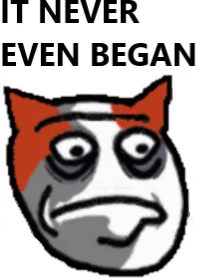
I guess I'm hipster indie trash
Jump in the discussion.
No email address required.
More options
Context
More options
Context
Nobody had to ask whether a game was "woke ' or whether it had "good writing" . You got 3 or 4 guys for a quarter and you killed everything that wasn't you until they killed you. Simple as
. You got 3 or 4 guys for a quarter and you killed everything that wasn't you until they killed you. Simple as
Jump in the discussion.
No email address required.
Well the Namco devs did ask themselves how to get more foid g*mers when they designed Pac-Man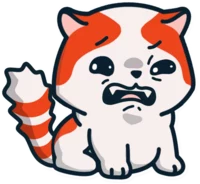
Jump in the discussion.
No email address required.
They did make that ms pac man game which was just pac man but your guy had a little pink bow on it.
Jump in the discussion.
No email address required.
More options
Context
More options
Context
Bro did not play vidya and it shows
Jump in the discussion.
No email address required.
More options
Context
More options
Context
Galaga was kickass, and Space invaders but with upgrading your ship
Jump in the discussion.
No email address required.
More options
Context
Jump in the discussion.
No email address required.
More options
Context
More options
Context